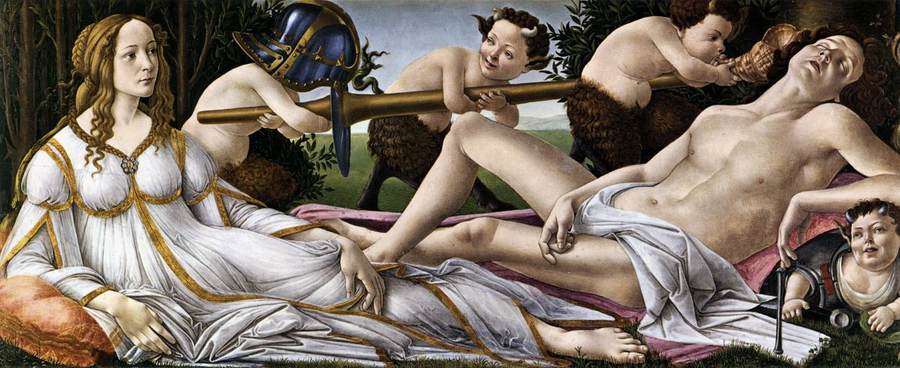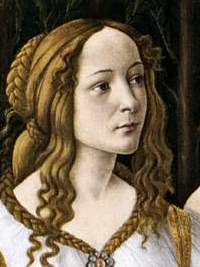Ways of Seeing

Metadata
Notes
- Art is the most true way of studying a past time because it shows an unadulterated view of how people saw rather than what they said or did.
- example of a pauper painting the dukes and duchesses in a way that shows them with judging eyes.
- People used to inherently believe (through how art was drawn) that the human eye was the center of the universe, that our perspective was universal. Then, along with the invention of the camera, the individual perspective was drawn into relief, and people started painting in ways.
- Art has become universal and now democratized to the people
Highlights
- We only see what we look at. To look is an act of choice. As a result of this act, what we see is brought within our reach - though not necessarily within arm’s reach. To touch something is to situate oneself in relation to it. (Close your eyes, move round the room and notice how the faculty of touch is like a static, limited form of sight.) We never look at just one thing; we are always looking at the relation between things and ourselves. Our vision is continually active, continually moving, continually holding things in a circle around itself, constituting what is present to us as we are. (View Highlight)
- An image is a sight which has been recreated or reproduced. It is an appearance, or a set of appearances, which has been detached from the place and time in which it first made its appearance and preserved - for a few moments or a few centuries. Every image embodies a way of seeing. Even a photograph. For photographs are not, as is often assumed, a mechanical record. Every time we look at a photograph, we are aware, however slightly, of the photographer selecting that sight from an infinity of other possible sights. (View Highlight)
- No other kind of relic or text from the past can offer such a direct testimony about the world which surrounded other people at other times. In this respect images are more precise and richer than literature. To say this is not to deny the expressive or imaginative quality of art, treating it as mere documentary evidence; the more imaginative the work, the more profoundly it allows us to share the artist’s experience of the visible. (View Highlight)
- In this confrontation the Regents and Regentesses stare at Hals, a destitute old painter who has lost his reputation and lives off public charity; he examines them through the eyes of a pauper who must nevertheless try to be objective, i.e., must try to surmount the way he sees as a pauper. This is the drama of these paintings. A drama of an ’ unforgettable contrast ‘.
Mystification has little to do with the vocabulary used. Mystification is the process of explaining away what might otherwise be evident. (View Highlight)
New highlights added February 16, 2023 at 9:46 PM
- The meaning of the original work no longer lies in what it uniquely says but in what it uniquely is. How is its unique existence evaluated and defined in our present culture? It is defined as an object whose value depends upon its rarity. (View Highlight)
 Reproduction isolates a detail of a painting from the whole. The detail is transformed. An allegorical figure becomes a portrait of a girl.
Reproduction isolates a detail of a painting from the whole. The detail is transformed. An allegorical figure becomes a portrait of a girl.
 When a painting is reproduced by a film camera it inevitably becomes material for the film-maker’s argument. (View Highlight)
When a painting is reproduced by a film camera it inevitably becomes material for the film-maker’s argument. (View Highlight)- Adults and children sometimes have boards in their bedrooms or living-rooms on which they pin pieces of paper: letters, snapshots, reproductions of paintings, newspaper cuttings, original drawings, postcards. On each board all the images belong to the same language and all are more or less equal within it, because they have been chosen in a highly personal way to match and express the experience of the room’s inhabitant. Logically, these boards should replace museums. (View Highlight)
- Cézanne made a similar observation from the painter’s point of view. ‘A minute in the world’s life passes! To paint it in its reality, and forget everything for that! To become that minute, to be the sensitive plate … give the image of what we see, forgetting everything that has appeared before our time …' (View Highlight)
- The experience of art, which at first was the experience of ritual, was set apart from the rest of life - precisely in order to be able to exercise power over it. Later the preserve of art became a social one. It entered the culture of the ruling class, whilst physically it was set apart and isolated in their palaces and houses. During all this history the authority of art was inseparable from the particular authority of the preserve. (View Highlight)
- If the new language of images were used differently, it would, through its use, confer a new kind of power. Within it we could begin to define our experiences more precisely in areas where words are inadequate. (Seeing comes before words.) Not only personal experience, but also the essential historical experience of our relation to the past: that is to say the experience of seeking to give meaning to our lives, of trying to understand the history of which we can become the active agents. (View Highlight)
title: “Ways of Seeing”
author: “John Berger”
url: ”https://www.ways-of-seeing.com/ch1”
date: 2023-07-29
source: reader
tags: media/articles
Ways of Seeing

Metadata
Highlights
- We only see what we look at. To look is an act of choice. As a result of this act, what we see is brought within our reach - though not necessarily within arm’s reach. To touch something is to situate oneself in relation to it. (Close your eyes, move round the room and notice how the faculty of touch is like a static, limited form of sight.) We never look at just one thing; we are always looking at the relation between things and ourselves. Our vision is continually active, continually moving, continually holding things in a circle around itself, constituting what is present to us as we are. (View Highlight)
- An image is a sight which has been recreated or reproduced. It is an appearance, or a set of appearances, which has been detached from the place and time in which it first made its appearance and preserved - for a few moments or a few centuries. Every image embodies a way of seeing. Even a photograph. For photographs are not, as is often assumed, a mechanical record. Every time we look at a photograph, we are aware, however slightly, of the photographer selecting that sight from an infinity of other possible sights. (View Highlight)
- No other kind of relic or text from the past can offer such a direct testimony about the world which surrounded other people at other times. In this respect images are more precise and richer than literature. To say this is not to deny the expressive or imaginative quality of art, treating it as mere documentary evidence; the more imaginative the work, the more profoundly it allows us to share the artist’s experience of the visible. (View Highlight)
- In this confrontation the Regents and Regentesses stare at Hals, a destitute old painter who has lost his reputation and lives off public charity; he examines them through the eyes of a pauper who must nevertheless try to be objective, i.e., must try to surmount the way he sees as a pauper. This is the drama of these paintings. A drama of an ’ unforgettable contrast ‘.
Mystification has little to do with the vocabulary used. Mystification is the process of explaining away what might otherwise be evident. (View Highlight)
- The meaning of the original work no longer lies in what it uniquely says but in what it uniquely is. How is its unique existence evaluated and defined in our present culture? It is defined as an object whose value depends upon its rarity. (View Highlight)
 Reproduction isolates a detail of a painting from the whole. The detail is transformed. An allegorical figure becomes a portrait of a girl.
Reproduction isolates a detail of a painting from the whole. The detail is transformed. An allegorical figure becomes a portrait of a girl.
 When a painting is reproduced by a film camera it inevitably becomes material for the film-maker’s argument. (View Highlight)
When a painting is reproduced by a film camera it inevitably becomes material for the film-maker’s argument. (View Highlight)- Adults and children sometimes have boards in their bedrooms or living-rooms on which they pin pieces of paper: letters, snapshots, reproductions of paintings, newspaper cuttings, original drawings, postcards. On each board all the images belong to the same language and all are more or less equal within it, because they have been chosen in a highly personal way to match and express the experience of the room’s inhabitant. Logically, these boards should replace museums. (View Highlight)
- Cézanne made a similar observation from the painter’s point of view. ‘A minute in the world’s life passes! To paint it in its reality, and forget everything for that! To become that minute, to be the sensitive plate … give the image of what we see, forgetting everything that has appeared before our time …' (View Highlight)
- The experience of art, which at first was the experience of ritual, was set apart from the rest of life - precisely in order to be able to exercise power over it. Later the preserve of art became a social one. It entered the culture of the ruling class, whilst physically it was set apart and isolated in their palaces and houses. During all this history the authority of art was inseparable from the particular authority of the preserve. (View Highlight)
- If the new language of images were used differently, it would, through its use, confer a new kind of power. Within it we could begin to define our experiences more precisely in areas where words are inadequate. (Seeing comes before words.) Not only personal experience, but also the essential historical experience of our relation to the past: that is to say the experience of seeking to give meaning to our lives, of trying to understand the history of which we can become the active agents. (View Highlight)
title: “Ways of Seeing”
author: “John Berger”
url: ”https://www.ways-of-seeing.com/ch1”
date: 2023-12-19
source: reader
tags: media/articles
Ways of Seeing

Metadata
Highlights
- We only see what we look at. To look is an act of choice. As a result of this act, what we see is brought within our reach - though not necessarily within arm’s reach. To touch something is to situate oneself in relation to it. (Close your eyes, move round the room and notice how the faculty of touch is like a static, limited form of sight.) We never look at just one thing; we are always looking at the relation between things and ourselves. Our vision is continually active, continually moving, continually holding things in a circle around itself, constituting what is present to us as we are. (View Highlight)
- An image is a sight which has been recreated or reproduced. It is an appearance, or a set of appearances, which has been detached from the place and time in which it first made its appearance and preserved - for a few moments or a few centuries. Every image embodies a way of seeing. Even a photograph. For photographs are not, as is often assumed, a mechanical record. Every time we look at a photograph, we are aware, however slightly, of the photographer selecting that sight from an infinity of other possible sights. (View Highlight)
- No other kind of relic or text from the past can offer such a direct testimony about the world which surrounded other people at other times. In this respect images are more precise and richer than literature. To say this is not to deny the expressive or imaginative quality of art, treating it as mere documentary evidence; the more imaginative the work, the more profoundly it allows us to share the artist’s experience of the visible. (View Highlight)
- In this confrontation the Regents and Regentesses stare at Hals, a destitute old painter who has lost his reputation and lives off public charity; he examines them through the eyes of a pauper who must nevertheless try to be objective, i.e., must try to surmount the way he sees as a pauper. This is the drama of these paintings. A drama of an ’ unforgettable contrast ‘.
Mystification has little to do with the vocabulary used. Mystification is the process of explaining away what might otherwise be evident. (View Highlight)
- The meaning of the original work no longer lies in what it uniquely says but in what it uniquely is. How is its unique existence evaluated and defined in our present culture? It is defined as an object whose value depends upon its rarity. (View Highlight)
 Reproduction isolates a detail of a painting from the whole. The detail is transformed. An allegorical figure becomes a portrait of a girl.
Reproduction isolates a detail of a painting from the whole. The detail is transformed. An allegorical figure becomes a portrait of a girl.
 When a painting is reproduced by a film camera it inevitably becomes material for the film-maker’s argument. (View Highlight)
When a painting is reproduced by a film camera it inevitably becomes material for the film-maker’s argument. (View Highlight)- Adults and children sometimes have boards in their bedrooms or living-rooms on which they pin pieces of paper: letters, snapshots, reproductions of paintings, newspaper cuttings, original drawings, postcards. On each board all the images belong to the same language and all are more or less equal within it, because they have been chosen in a highly personal way to match and express the experience of the room’s inhabitant. Logically, these boards should replace museums. (View Highlight)
- Cézanne made a similar observation from the painter’s point of view. ‘A minute in the world’s life passes! To paint it in its reality, and forget everything for that! To become that minute, to be the sensitive plate … give the image of what we see, forgetting everything that has appeared before our time …' (View Highlight)
- The experience of art, which at first was the experience of ritual, was set apart from the rest of life - precisely in order to be able to exercise power over it. Later the preserve of art became a social one. It entered the culture of the ruling class, whilst physically it was set apart and isolated in their palaces and houses. During all this history the authority of art was inseparable from the particular authority of the preserve. (View Highlight)
- If the new language of images were used differently, it would, through its use, confer a new kind of power. Within it we could begin to define our experiences more precisely in areas where words are inadequate. (Seeing comes before words.) Not only personal experience, but also the essential historical experience of our relation to the past: that is to say the experience of seeking to give meaning to our lives, of trying to understand the history of which we can become the active agents. (View Highlight)

 Reproduction isolates a detail of a painting from the whole. The detail is transformed. An allegorical figure becomes a portrait of a girl.
Reproduction isolates a detail of a painting from the whole. The detail is transformed. An allegorical figure becomes a portrait of a girl.
 When a painting is reproduced by a film camera it inevitably becomes material for the film-maker’s argument. (View Highlight)
When a painting is reproduced by a film camera it inevitably becomes material for the film-maker’s argument. (View Highlight)
 Reproduction isolates a detail of a painting from the whole. The detail is transformed. An allegorical figure becomes a portrait of a girl.
Reproduction isolates a detail of a painting from the whole. The detail is transformed. An allegorical figure becomes a portrait of a girl.
 When a painting is reproduced by a film camera it inevitably becomes material for the film-maker’s argument. (View Highlight)
When a painting is reproduced by a film camera it inevitably becomes material for the film-maker’s argument. (View Highlight)
 Reproduction isolates a detail of a painting from the whole. The detail is transformed. An allegorical figure becomes a portrait of a girl.
Reproduction isolates a detail of a painting from the whole. The detail is transformed. An allegorical figure becomes a portrait of a girl.
 When a painting is reproduced by a film camera it inevitably becomes material for the film-maker’s argument. (View Highlight)
When a painting is reproduced by a film camera it inevitably becomes material for the film-maker’s argument. (View Highlight)